
|   |

|   |
 e-mail: sunilkothari1933@gmail.com Song of the Nymphs directed by Ratan Thiyam Photos: Shobha Deepak Singh March 23, 2020 There is always a buzz about a new play by Ratan Thiyam, the celebrated writer, director, designer, musician, and actor. After he directed Shakespeare's Macbeth three years ago, the latest Lairembigee Eshei, Song of Nymphs in Manipuri, as a closing play at 21st Bharat Rang Mahotsav at Kamani Hall, Delhi, attracted a large crowd to witness the new play. The Chorus Repertory Theatre was established in April 1976 in the valley of the small hill state of Manipur in the easternmost part of India. Since then, Ratan and his company have never looked back, winning awards in international theatre festivals. Renowned for its disciplined performance practice, spectacular aural and visual aesthetics with potent thematic explorations, Ratan's work has placed him in the company of such figures as Suzuki, Brook and Grotowski. To strike a personal note, I have seen from close quarters his direction and training methodology. It has been a rare privilege. The play as per Ratan's well known approach is a response to his existence in every day life. It contains his tradition, inspiration from myth and legend. What helps him, as he says, "is eagerness of entering an unknown area, new and untried methods, and unfamiliar devices helping me in my experimentation. In each new piece of work, I feel that I am wrestling with techniques to find out the exact vehicle of expression for the thematic content." He further elucidates: "I am a dreamer and my dream takes me forward in my journey. I feel as if I am coming back from a pilgrimage after each and every production I have completed. A good theatre carries the ability to leave behind an imprint on the intellect and senses of the spectators. It is a vehicle of expression for sharing thoughts to a wide ambience across intellectual, cultural, and linguistic boundaries." 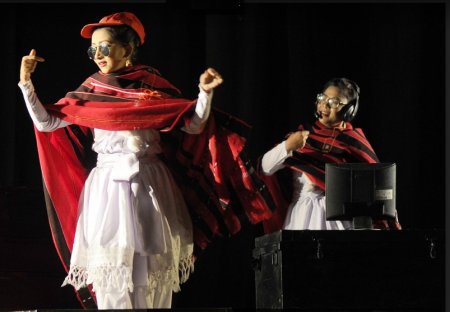
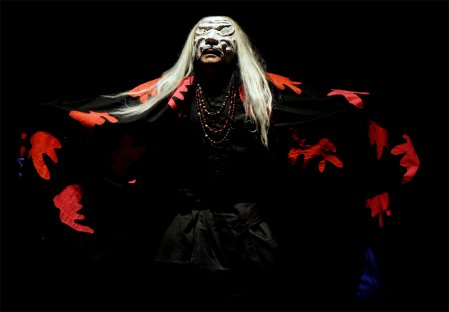
The play under review echoes his statement. Apparently a simple tale, it speaks of seven nymphs who have been flying round the world, witnessing the changes in the nature, environment and human condition. Ratan speaks of peace of sky, earth, water, trees, men and as a metaphor makes nymphs fly towards the 22nd century. The inbuilt commentary of 21st century is articulated towards the end. And also during the gradual unfolding of the play as what the seven nymphs observe. Our culture and tradition derive from food gathering, varieties of magical fertility rites, connectivity with ancestors, earth, sun, moon, sky, forest, water and creatures. It is in these areas that Ratan is at his best. The seven nymphs dressed in pure white costumes, with white lighting, slowly carrying the large dishes, dance gently to little tinkling of the music. Those who are familiar with the Lai Haraoba dance tradition of Manipur would at once appreciate Ratan's drawing movements from tradition. It has a slow but mesmerizing quality. Immediacy of life experiences is recalled in movement, sound and rhythm. The nymphs move waving their scarves creating illusion of flying across the sky. When nymphs see a king who had destroyed nature and his wailing, they realize how protection of nature is important. The sequences of nymphs entering water, and in a surrealistic scene of covering their faces entering water, the scene like underwater is breathtaking! When a group of bird catchers with their net try to catch the nymphs, they fail and the nymphs laugh at them. The play tries to decipher many challenges faced by our rituals and traditions which carry the identity of our culture inherited from our ancestors. 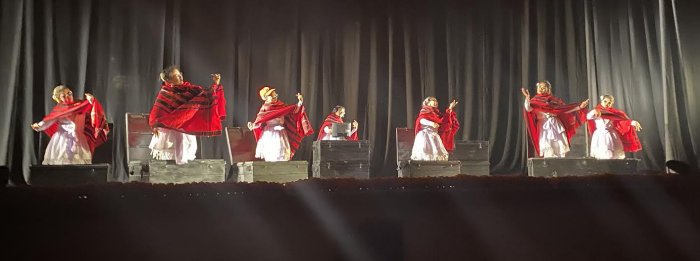 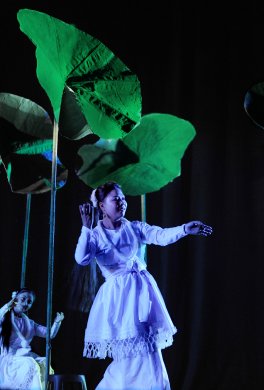
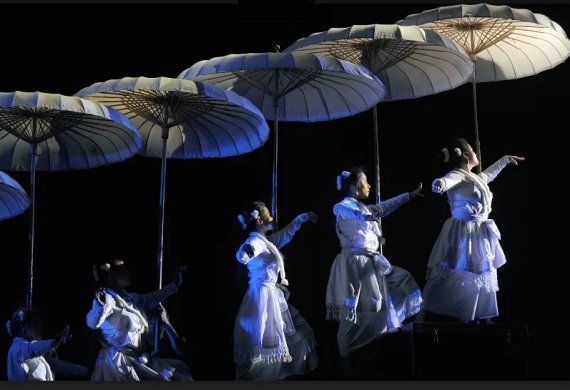
The finale with seven nymphs climbing seven steps with white umbrellas held over their heads proclaiming peace leaves an indelible impression. I was reminded of Abhimanyu climbing steps towards heaven in the play Chakravyuha. Whereas there were colourful umbrellas being raised with the sound of conch in Chakravyuha, in this play the sight of seven nymphs in white clothes and white umbrellas in ascending order looked equally powerful. Ratan has trained an entire new group of young male and female actors who under his direction show professional expertise. Script, music, design and direction are by Ratan, assisted by his son Thawai who also looks after lighting. As is the international practice, the play is of one hour and ten minutes.  Dr. Sunil Kothari is a dance historian, scholar, author and critic, Padma Shri awardee and fellow, Sangeet Natak Akademi. Dance Critics' Association, New York, has honoured him with Lifetime Achievement award. Post your comments Please provide your name and email id when you use the Anonymous profile in the blog to post a comment. All appropriate comments posted with name and email id in the blog will also be featured in the site. |